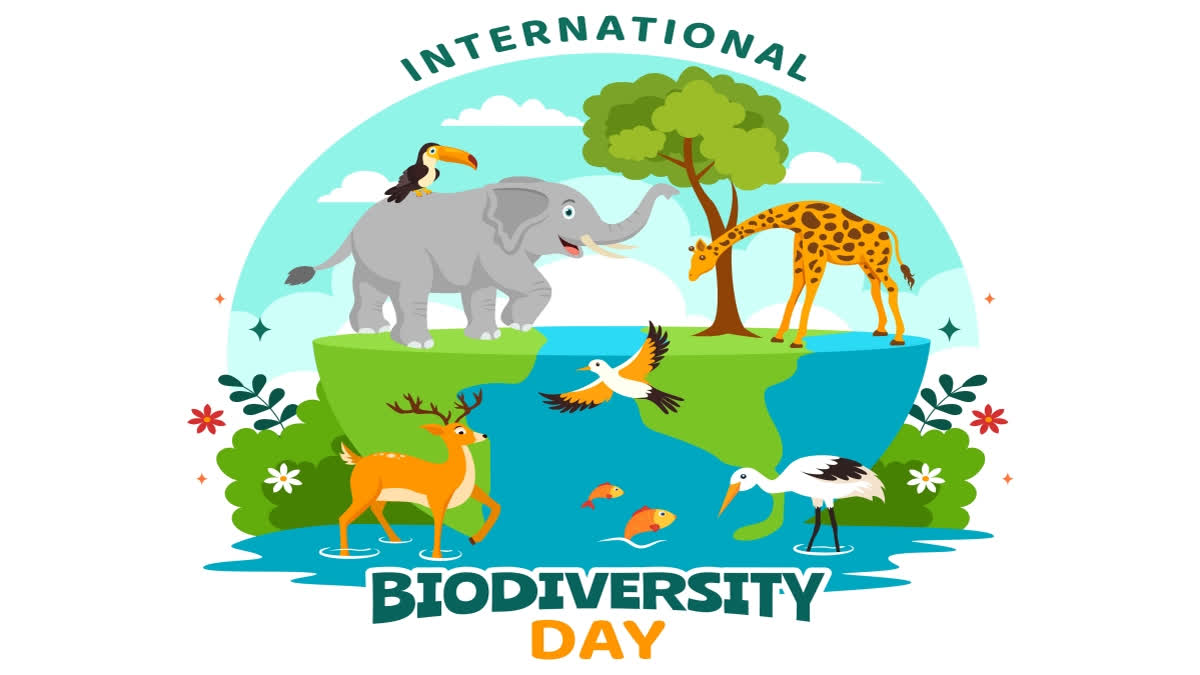Hyderabad: The International Day for Biological Diversity (IDB) is celebrated every year globally on May 22 to create awareness among citizens and stakeholders on the importance and need for the conservation of biological diversity.
The UN General Assembly adopted May 22 as IDB, to commemorate the adoption of the text of the Convention on 22 May 1992 by the Nairobi Final Act of the Conference for the Adoption of the Agreed Text of the Convention on Biological Diversity. The theme of the IDB 2024 is 'Be part of the Plan'.
Biological diversity is often understood in terms of the wide variety of plants, animals and microorganisms, but it also includes genetic differences within each species for example, between varieties of crops and breeds of livestock and the variety of ecosystems (lakes, forests, deserts, agricultural landscapes) that host multiple kinds of interactions among their members (humans, plants, animals).
Biological diversity resources are the pillars upon which we build civilizations. Fish provides 20 per cent of animal protein to about three billion people. Over 80 per cent of the human diet is provided by plants. As many as 80 per cent of people living in rural areas in developing countries rely on traditional plant‐based medicines for basic healthcare.
But loss of biodiversity threatens all, including our health. It has been proven that biodiversity loss could expand zoonoses - diseases transmitted from animals to humans- while, on the other hand, if we keep biodiversity intact, it offers excellent tools to fight against pandemics like those caused by coronaviruses.
While there is growing recognition that biological diversity is a global asset of tremendous value to future generations, certain human activities are significantly reducing the number of species. Given the importance of public education and awareness about this issue, the UN decided to celebrate the International Day for Biological Diversity annually.
What UNESCO does?
UNESCO's intersectoral strategy for biodiversity is based on three pillars: restore the relationship between humans and nature and regenerate ecosystems; conserve the harmony of our ecosystems; and amplify the power of youth. UNESCO-designated sites are the backbone of the organization's action for biodiversity. World Heritage sites, biosphere reserves and UNESCO Global Geoparks cover 6 per cent of the Earth's landmass and are key areas where people learn to live in harmony with other living species and experiences are shared for the benefit of all.
Steps taken by the government of India for biodiversity conservation
The Indian government has implemented several measures for the protection of biodiversity, including:
- Enactment of the Wild Life (Protection) Act in 1972, which facilitates the creation of Protected Areas for wildlife conservation and imposes penalties for hunting specified fauna
- Formulation of the Wetland (Conservation and Management) Rules 2010 to safeguard wetlands in the states
- Implementation of the Centrally Sponsored Scheme of the National Plan for Conservation of Aquatic Eco-System, assisting states in managing wetlands, including Ramsar sites
- Establishment of the Wildlife Crime Control Bureau to control illegal trade in wildlife, including endangered species
- Undertaking research on wildlife conservation by organisations like the Wildlife Institute of India, the Bombay Natural History Society, and the Salim Ali Centre for Ornithology and Natural History
- Ban on the veterinary use of the diclofenac drug, which has led to the decline of Gyps vultures, and initiation of Conservation Breeding Programmes at Pinjore, Buxa, and Rani
- Modification of the Centrally Sponsored Scheme 'Integrated Development of Wildlife Habitats' to include a component for the recovery of endangered species, with 16 identified species
- Creation of Protected Areas such as National Parks, Sanctuaries, Conservation Reserves, and Community Reserves across the country to provide better protection for wildlife and their habitats
- Extension of financial and technical assistance to state governments under various Centrally Sponsored Schemes, including 'Integrated Development of Wildlife Habitats,’ ‘Project Tiger,’ and ‘Project Elephant'
- Empowerment of the Central Bureau of Investigation (CBI) under the Wild Life (Protection) Act to apprehend and prosecute wildlife offenders
- Requesting state governments to strengthen field formations and intensify patrolling in and around Protected Areas
Key policies related to the environment and biodiversity that have been formulated in India
- National Forest Policy
- National Policy and Macro-level Action Strategy on Biodiversity
- National Conservation Strategy and Policy Statement on Environment and Development
- National Biodiversity Action Plan (2009)
- National Agriculture Policy
- National Water Policy
- National Environment Policy (2006)
Celebrating the International Day for Biological Diversity
- A delicious and enjoyable celebration of biodiversity can be achieved by taking advantage of the chance to visit local farmers' markets and co-ops and sample a variety of produce. Biodiversity can add a wonderful new experience to your table, whether you use heirloom tomatoes in your cooking or gardening, or try one of the many colours of carrots available that aren't orange
- Participating in a neighbourhood park clean-up team and assisting in the eradication of invasive plants from your surroundings is another way to celebrate biodiversity. These volunteer teams will come together to remove plants that are taking over natural growth areas and affecting the biodiversity of the local fauna
- Going outside and taking in all the various forms of life your community has to offer is another way to commemorate the International Day for Biological Diversity. You may be surprised to learn about the incredible diversity of life found in even your neighbourhood park, from the insects that scuttle across the dirt and grass to the flowers we so foolishly group together as "wildflowers"
In any case, take some time to appreciate the diversity of nature—not just on the International Day for Biological Diversity, but every day of the year.



